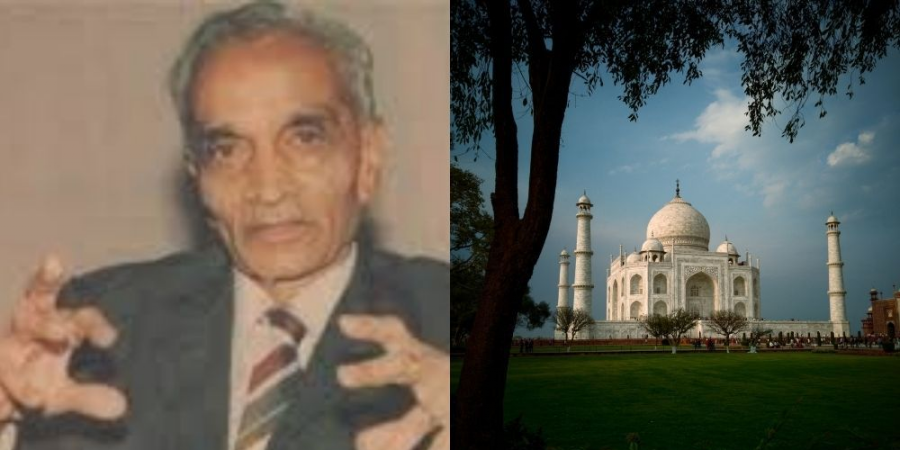

P.N. Oak (Purushottam Nagesh Oak) was an Indian writer and self-styled historian best known for his controversial and unorthodox theories about Indian history. Born on March 2, 1917, in Indore, Oak stirred considerable debate with his assertions, which often challenged mainstream historical narratives and were rooted in his belief in the primacy of ancient Indian civilization.
P.N. Oak pursued a degree in history and worked as a publicist for the Indian National Army under Subhas Chandra Bose during India’s freedom struggle. Later, he worked as a journalist and editor, but it was his venture into historical writing that brought him widespread attention and, in many cases, criticism.
P.N. Oak gained widespread attention and controversy for his claim that the Taj Mahal, widely recognized as a Mughal monument built by Shah Jahan, was originally a Hindu temple. In 2000, the Supreme Court of India dismissed Oak’s petition to declare the Taj Mahal a Hindu structure, remarking that he had a "bee in his bonnet" regarding the monument. Despite this, his theory has inspired several court cases over the years, as of 2017, seeking to reclassify the Taj Mahal as a Hindu temple. However, the Archaeological Survey of India (ASI) has firmly stated there is no evidence to support such claims.
Art historian Giles Tillotson has referred to Oak's assertions as "pseudo-scholarship," describing them as a "desperate bid to assign a new meaning to the Taj." Oak based his arguments on an interpretation of the Padshahnama, which mentions Shah Jahan purchasing the land for the Taj Mahal from Jai Singh I. According to Oak, this indicates the Taj was a Hindu structure originally built as a Shiva temple. However, Tillotson points out that Oak provides no credible evidence to support his claim of pre-Mughal origins for the monument. Moreover, Tillotson critiques Oak’s earlier suggestion that the Taj dates back to the 4th century, arguing that India lacked the necessary architectural know-how for such a structure at that time. Oak later revised his claim, dating it to the 12th century, but continued to assert that the Mughals never constructed buildings but merely appropriated and modified existing Hindu structures. He also claimed that architectural similarities with West Asian buildings were evidence of their origins in Hindu architecture.
In a 13-page pamphlet titled Was Kaaba a Hindu Temple?, Oak claimed that the Kaaba in Mecca was originally a Hindu temple, as part of a broader argument for a "Vedic past of Arabia." He based his assertions on an alleged inscription mentioning King Vikramaditya, which he claimed was found on a dish inside the Kaaba. According to Oak, the text of the inscription appeared in the anthology Sayar-ul-Okul (meaning "Memorable Words"), supposedly compiled in 1742 by a "Sultan Salim" (though historically, Mahmud I was the ruler at the time, and Sultan Selim III ruled later, from 1761 to 1808).
Oak further alleged that the anthology included poetry from Amr ibn Hisham, a pre-Islamic poet and uncle of the Prophet Muhammad who refused to convert to Islam. Oak claimed that the anthology was stored in the Galatasaray Mekteb-i Sultanisi Library (now Galatasaray Lisesi) in Istanbul, though this claim lacks any credible evidence.
P.N. Oak’s theories have been widely criticized for their lack of credible evidence, poor methodology, and strong ideological bias.
Academic Critique:
Artistic and Historical Evaluation:
Political Impact:
Oak’s theories have found resonance among certain right-wing Hindu factions seeking to use his ideas for politico-religious purposes. Historian Tapan Raychaudhuri noted that Oak is held in high regard within the Sangh Parivar, a family of Hindu nationalist organizations. These groups have leveraged his claims to advance their ideological goals, despite widespread academic rejection of his work.
While P.N. Oak's theories have been dismissed by the academic community as pseudohistory, his ideas continue to attract attention in certain circles, particularly among those with nationalist leanings. His work has sparked debates about the politicization of history and the role of ideology in shaping historical narratives. However, his legacy remains a cautionary tale of how historical scholarship can be misused to propagate myths and serve political agendas.
